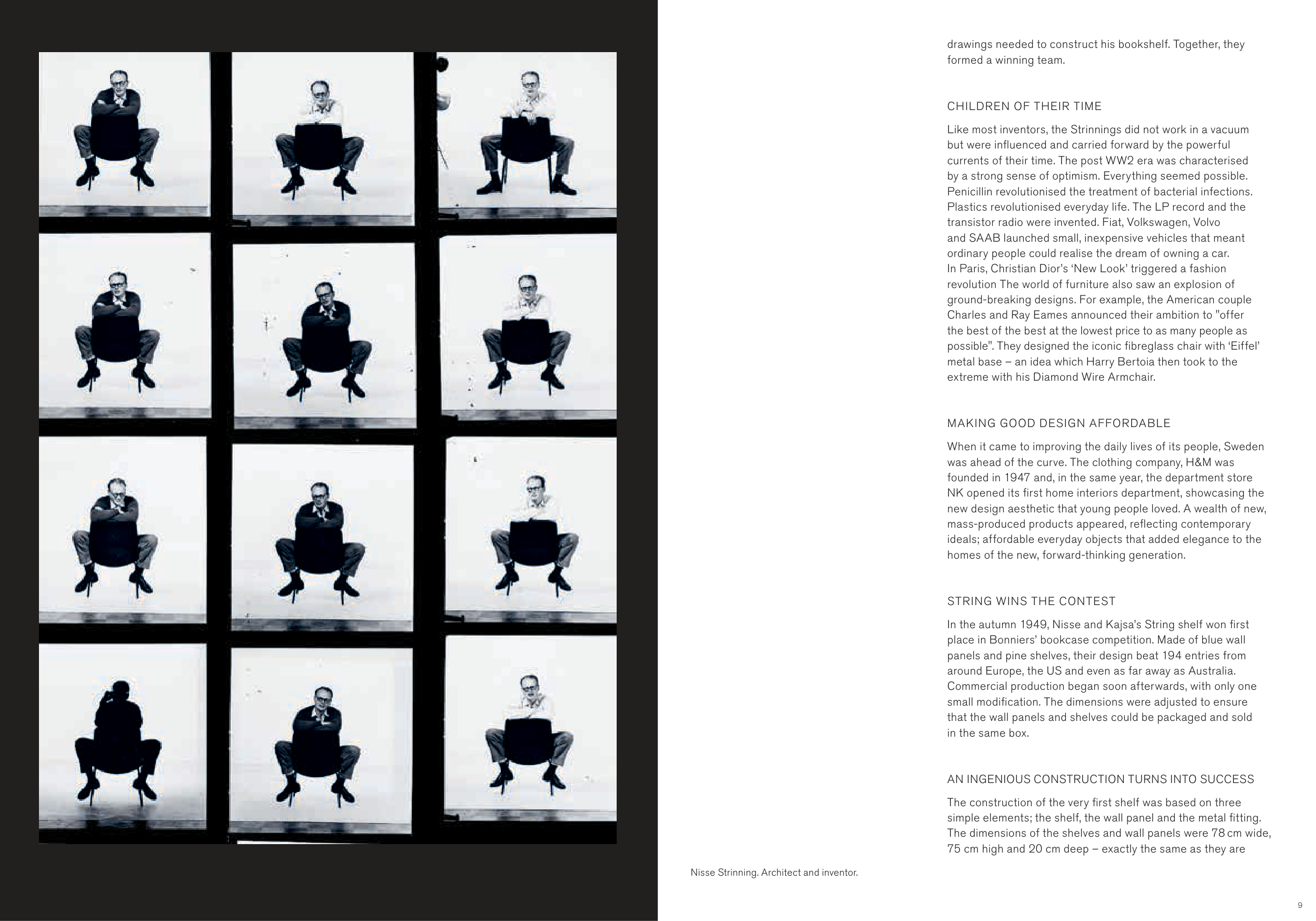8
9
Nisse Strinning. Architect and inventor.
drawings needed to construct his bookshelf. Together, they
formed a winning team.
CHILDREN OF THEIR TIME
Like most inventors, the Strinnings did not work in a vacuum
but were influenced and carried forward by the powerful
currents of their time. The post WW2 era was characterised
by a strong sense of optimism. Everything seemed possible.
Penicillin revolutionised the treatment of bacterial infections.
Plastics revolutionised everyday life. The LP record and the
transistor radio were invented. Fiat, Volkswagen, Volvo
and SAAB launched small, inexpensive vehicles that meant
ordinary people could realise the dream of owning a car.
In Paris, Christian Dior’s ‘New Look’ triggered a fashion
revolution The world of furniture also saw an explosion of
ground-breaking designs. For example, the American couple
Charles and Ray Eames announced their ambition to "offer
the best of the best at the lowest price to as many people as
possible". They designed the iconic fibreglass chair with ‘Eiffel’
metal base – an idea which Harry Bertoia then took to the
extreme with his Diamond Wire Armchair.
MAKING GOOD DESIGN AFFORDABLE
When it came to improving the daily lives of its people, Sweden
was ahead of the curve. The clothing company, H&M was
founded in 1947 and, in the same year, the department store
NK opened its first home interiors department, showcasing the
new design aesthetic that young people loved. A wealth of new,
mass-produced products appeared, reflecting contemporary
ideals; affordable everyday objects that added elegance to the
homes of the new, forward-thinking generation.
STRING WINS THE CONTEST
In the autumn 1949, Nisse and Kajsa’s String shelf won first
place in Bonniers’ bookcase competition. Made of blue wall
panels and pine shelves, their design beat 194 entries from
around Europe, the US and even as far away as Australia.
Commercial production began soon afterwards, with only one
small modification. The dimensions were adjusted to ensure
that the wall panels and shelves could be packaged and sold
in the same box.
AN INGENIOUS CONSTRUCTION TURNS INTO SUCCESS
The construction of the very first shelf was based on three
simple elements; the shelf, the wall panel and the metal fitting.
The dimensions of the shelves and wall panels were 78 cm wide,
75 cm high and 20 cm deep – exactly the same as they are


